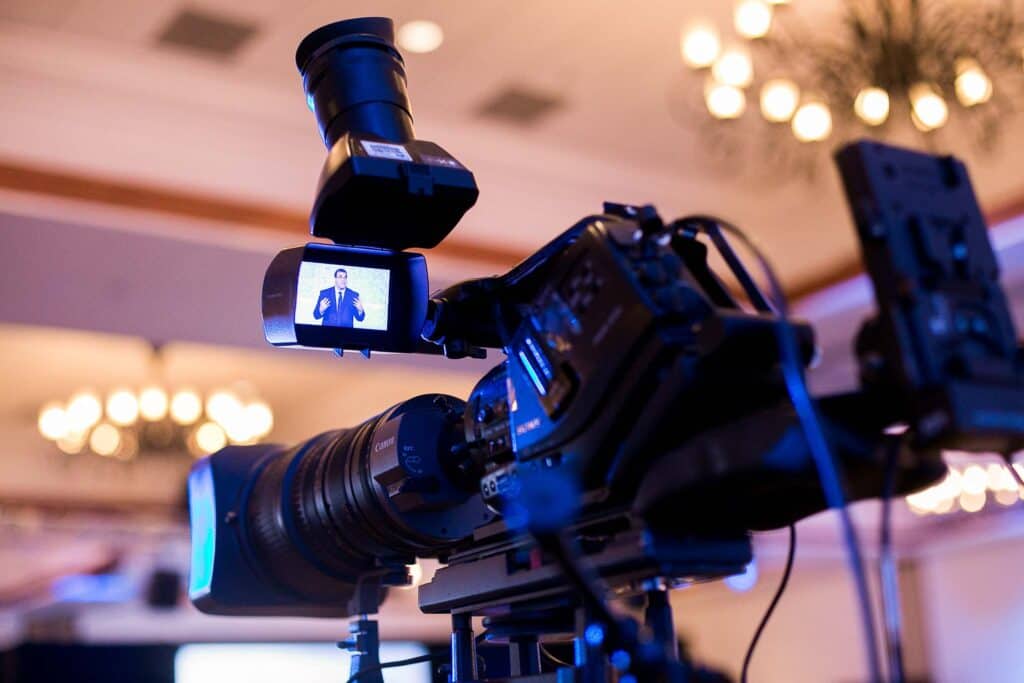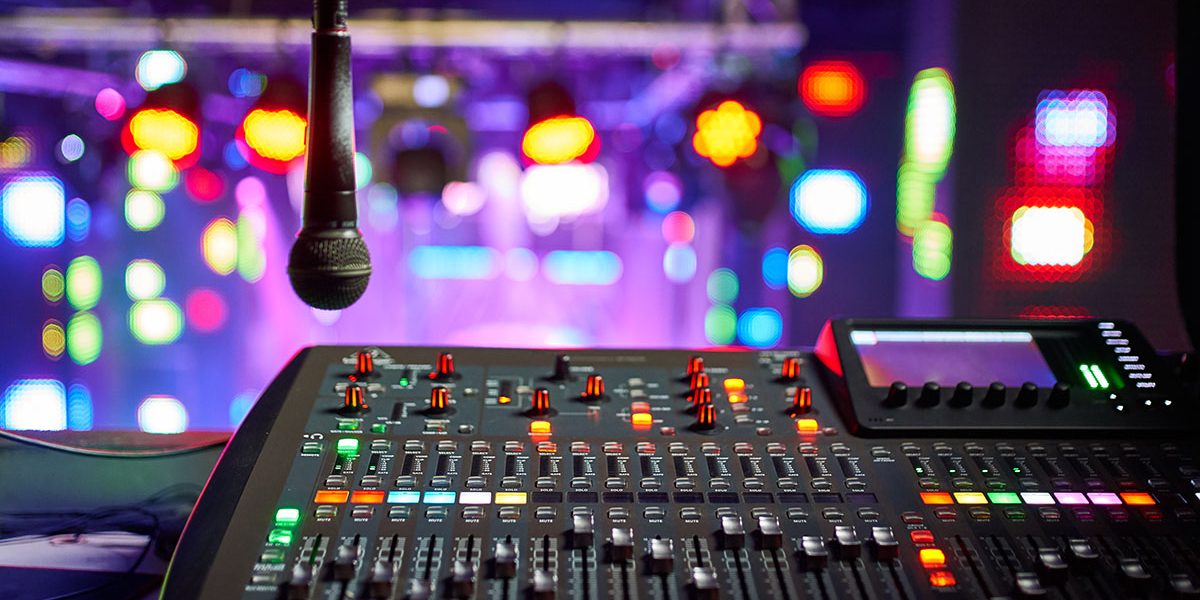Why audio visual charlotte nc is ideal for intimate settings
Comprehending the Addition of Audio Visual Technology in Today's Educational Environments
The combination of audio-visual technology in instructional settings has actually changed the training and discovering process. Educators currently have access to devices that satisfy numerous learning designs, boosting trainee involvement and cooperation. Nevertheless, the consolidation of these innovations presents both possibilities and challenges. Recognizing how to efficiently carry out these devices is essential. What approaches can teachers employ to optimize the benefits of audio-visual modern technology in their class?
The Development of Audio-Visual Technology in Education And Learning
As instructional requirements developed over the decades, audio-visual innovation undertook considerable makeovers that reshaped the understanding atmosphere. Tools such as movie projectors and slide shows were the main means of integrating aesthetic elements into class. These very early technologies offered teachers with the capability to present info dynamically, yet they were restricted in access and interactivity.
With the advent of video cassette recorders in the 1970s, classrooms began to integrate taped lessons, broadening the scope of educational resources. The introduction of individual computer systems in the 1980s additional changed this landscape, permitting for the production of multimedia discussions and interactive understanding experiences.
The surge of the net in the 1990s noted a turning point, enabling real-time access to a wealth of audio-visual materials. Today, digital devices such as interactive whiteboards and on-line understanding platforms continue to enhance the educational experience, fostering engagement and partnership among learners.
Benefits of Audio-Visual Tools for Diverse Discovering Styles
Audio-visual tools play a vital role in satisfying varied knowing styles by boosting visual learning and boosting auditory interaction. By incorporating pictures, videos, and sound, these technologies develop an even more inclusive academic environment. This diverse method enables teachers to address the varied preferences and requirements of trainees efficiently.
Enhancing Visual Understanding
Involvement in the understanding procedure is markedly enhanced via using audio-visual tools, satisfying numerous discovering designs. These devices, such as videos, infographics, and interactive presentations, give visual stimulations that aid understanding and retention. Visual learners, particularly, gain from the unification of images and animations, which can streamline intricate principles and improve understanding. In addition, audio-visual sources can show real-world applications, making finding out more appropriate and engaging. By integrating shade, movement, and audio, educators can produce a vibrant knowing setting that catches pupils' attention and fosters deeper cognitive connections. Inevitably, the tactical usage of audio-visual technology not just supports visual understanding however additionally improves the general instructional experience for diverse students.
Improving Auditory Involvement
A considerable benefit of incorporating audio-visual tools in education is their capability to boost auditory interaction amongst students. These tools, which incorporate multimedia discussions, podcasts, and interactive audio aspects, accommodate various learning designs, particularly benefiting acoustic students (audio visual charlotte nc). By incorporating sound and narration, instructors can develop immersive experiences that record pupils' focus and enhance understanding. This involvement is essential, as it fosters a much deeper understanding of the product and advertises retention. In addition, audio-visual devices can promote joint discovering atmospheres, motivating students to participate in conversations and share their insights. Ultimately, the incorporation of audio-visual innovation not only supports acoustic engagement but likewise enhances the overall instructional experience, making finding out more dynamic and reliable for all students
Enhancing Engagement With Interactive Knowing

Gamification elements, such as tests and simulations, can enhance motivation and retention, making finding out extra satisfying and effective. These methods not only promote cognitive interaction but additionally satisfy diverse understanding styles, making certain that all pupils can take part meaningfully. As an outcome, interactive knowing environments promote a sense of community and belonging, eventually leading to enhanced scholastic end results. Through the combination of audio aesthetic modern technology, educators can transform conventional class right into lively rooms where students grow and proactively shape their instructional trips.
Linking Concept and Exercise With Multimedia Resources
Multimedia resources serve as an important link between academic ideas and functional application in educational settings. By improving interaction, facilitating collaborative knowing experiences, and supporting diverse understanding designs, these tools produce a more inclusive and dynamic learning environment - audio visual charlotte nc. This approach not only cultivates much deeper understanding however additionally prepares students for real-world challenges

Enhancing Involvement Through Multimedia
Engagement in academic setups significantly enhances when trainers incorporate multimedia sources right into their mentor techniques. The use of videos, podcasts, and interactive discussions improves the learning experience, permitting trainees read more to connect with the product on several levels. Multimedia resources accommodate various learning styles, giving visual, auditory, and kinesthetic stimuli that can hold trainees' attention more effectively than conventional lecture techniques. Additionally, these resources can streamline complicated concepts, making them a lot more accessible and memorable. By integrating multimedia, educators can produce a dynamic class environment that fosters inquisitiveness and inspires learners. Inevitably, the calculated use audio-visual modern technology serves to link the void between theoretical expertise and functional application, enriching the academic experience for both instructors and trainees.
Helping With Collaborative Knowing Knowledge
Many researches indicate that joint learning experiences markedly boost trainee end results when integrated with multimedia sources. Multimedia devices help with communication among trainees, permitting them to take part in problem-solving and essential believing jointly. By utilizing video conferencing, joint systems, and interactive presentations, educators create environments helpful to teamwork and shared learning. These technologies make it possible for students to connect their concepts properly and receive instant comments, fostering a much deeper understanding of the subject. On top of that, multimedia sources can offer intricate principles in even more absorbable formats, promoting discussion and collaboration. Consequently, the combination of joint understanding and audio-visual technology not just enriches the educational experience however likewise prepares pupils for real-world synergy characteristics, stressing the value of teamwork and cumulative expertise construction.
Sustaining Diverse Understanding Styles
While standard training techniques commonly provide to a restricted variety of finding out preferences, the integration of audio-visual innovation supplies an extra inclusive method to education and learning. By utilizing multimedia sources such as videos, interactive simulations, and electronic presentations, educators can attend to different discovering styles, consisting of aesthetic, auditory, and kinesthetic. This adaptability permits separated direction, allowing trainees to engage with material in ways that resonate with their specific choices. Furthermore, audio-visual tools can facilitate deeper understanding by giving numerous depictions of complicated concepts. Consequently, pupils that may deal with conventional approaches can locate alternative paths to success, fostering a more fair knowing atmosphere that sustains scholastic achievement for all learners.
Difficulties in Carrying Out Audio-Visual Modern Technology
Although audio-visual innovation holds excellent guarantee for enhancing educational experiences, its implementation commonly comes across significant difficulties. One key concern is the financial problem associated with investing in and keeping such devices, which can strain budgets, especially in underfunded establishments. In addition, poor training for teachers can hinder efficient integration, leaving them ill-prepared to utilize the modern technology fully. Technical issues, such as software breakdowns and compatibility issues, might also interfere with lessons and discourage both teachers and trainees. Varying levels of pupil accessibility to modern technology outside the class can produce differences in learning possibilities. The potential for over-reliance on technology may detract from important training approaches, eventually restricting the educational experience. Attending to these difficulties calls for a thorough strategy, including appropriate financing, professional development, and equitable accessibility to sources, to assure that audio-visual technology can be leveraged properly in today's academic settings.
Ideal Practices for Integrating Modern Technology in the Class

Additionally, cultivating an interactive atmosphere with collective tools urges student involvement and engagement. Utilizing diverse audio-visual sources accommodates numerous learning styles, accommodating aesthetic, acoustic, and kinesthetic students. Regularly examining the impact of innovation on student knowing assists teachers improve their techniques and adapt to altering demands. Ultimately, including trainees in the selection of modern technology promotes ownership and motivation. By adhering to these finest practices, instructors can develop a vibrant class atmosphere that successfully integrates modern technology and improves the instructional experience for all trainees.
The Future of Audio-Visual Innovation in Education
As classrooms significantly embrace innovation, the landscape of audio-visual devices in education remains to develop (audio visual charlotte nc). Future innovations are expected to concentrate on better interactivity and customization, permitting instructors to customize learning experiences to individual trainee requirements. Innovations such as increased reality (AR) and digital fact (VIRTUAL REALITY) will likely give immersive learning settings, improving student engagement and understanding
Additionally, expert system (AI) is positioned to play a substantial duty in audio-visual technology by supplying real-time responses and adaptive understanding pathways. This combination may assist educators identify and deal with pupil challenges extra properly. Cloud-based platforms will certainly facilitate easier accessibility to sources and collaboration among students and educators, no matter of location.
In enhancement to these technological advancements, specialist advancement for teachers will be crucial, ensuring they are furnished to make use of these tools properly. Overall, the future of audio-visual innovation in education assures to develop even more vibrant, inclusive, and impactful understanding experiences.
Regularly Asked Inquiries
Just How Can Educators Select the Right Audio-Visual Equipment for Their Classrooms?
Picking suitable audio-visual devices needs educators to evaluate their educational objectives, think about pupil demands, examine readily available innovation, and look for referrals from peers or experts, making certain devices properly enhance understanding and involvement within their details class atmosphere.
What Budget plan Considerations Are There for Implementing Audio-Visual Technology?
Budget plan considerations for implementing audio-visual innovation consist of preliminary acquisition prices, upkeep expenses, training for personnel, and potential software application licensing fees. Additionally, long-lasting investment in updates and replacements must likewise be factored into monetary planning.
Exist Details Training Resources for Teachers on Audio-Visual Equipment?
Many organizations provide training sources for teachers on audio-visual devices, consisting of on-line training courses, workshops, and instructional overviews. These sources intend to improve teachers' abilities and self-confidence in effectively incorporating innovation into their mentor methods.
Exactly how Do We Determine the Performance of Audio-Visual Innovation in Knowing?
Measuring the effectiveness of audio-visual modern technology in learning includes evaluating pupil interaction, understanding, retention rates, and general academic performance. Studies, evaluations, and observational studies can supply beneficial understandings into its effect on academic outcomes.
What Are Typical Misunderstandings About Audio-Visual Technology in Education And Learning?
Usual mistaken beliefs concerning audio-visual innovation in education and learning consist of the idea that it assures involvement and finding out outcomes, as well as the presumption that all trainees benefit equally, ignoring individual learning choices and requirements.